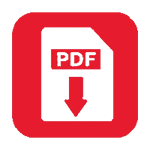Información Básica
| Número UN: | 3082 |
| Nombre apropiado de expedición: | SUSTANCIA LÍQUIDA PELIGROSA PARA EL MEDIO AMBIENTE, N.E.P. |
| Clase/División: | 9 |
| Código de Clasificación: | M6 |
| Grupo de Embalaje: | III |
| Cantidades Limitadas: | 5 l |
| FEm: | F-A, S-F |
Etiquetas de Riesgo

PP1
UN Nos. 1133, 1210, 1263 and 1866 and for adhesives, printing inks, printing ink related materials, paints, paint related materials and resin solutions which are assigned to UN 3082, metal or plastics packagings for substances of packing groups II and III in quantities of 5 litres or less per packaging are not required to meet the performance tests in chapter 6.1 when transported;
(a) in palletized loads, a pallet box or a unit load device, such as individual packagings placed or stacked and secured by strapping, shrink- or stretch-wrapping or other suitable means to a pallet. For sea transport, the palletized loads, pallet boxes or unit load devices shall be firmlypacked and secured in closed cargo transport units. On roll-on/roll-off ships the unit loads may be carried in vehicles other than closedvehicles provided they are securely fenced to the full height of the cargo carried; or
(b) as inner packagings of combination packagings with a maximum net mass of 40 kg.
IBC03
PACKING INSTRUCTION
The following IBCs are authorized, provided the general provisions of 4.1.1, 4.1.2 and 4.1.3 are met:
(1) Metal (31A, 31B and 31N);
(2) Rigid plastics (31H1 and 31H2);
(3) Composite (31HZ1, 31HA2, 31HB2, 31HN2, 31HD2 and 31HH2)
Cargo ships or passenger ships carrying a number of passengers limited to not more than 25 or to 1 passenger per 3 metres of overall length, whichever is the greater number:
ON DECK OR UNDER DECK
Other passenger ships in which the limiting number of passenger transported is exceeded:
ON DECK OR UNDER DECK
PORTABLE TANK INSTRUCTION T4
These portable tank instructions apply to liquid and solid substances of classes 3 to 9.
The general provisions of 6.7.2 shall be met.
Minimum test pressure (bar):
2.65
Minimum shell thickness (in mm – reference steel) (see 6.7.2.4):
See 6.7.2.4.2
Pressure-relief provisions (see 6.7.2.8):
Normal
Bottom opening provisions (see 6.7.2.6):
See 6.7.2.6.3

